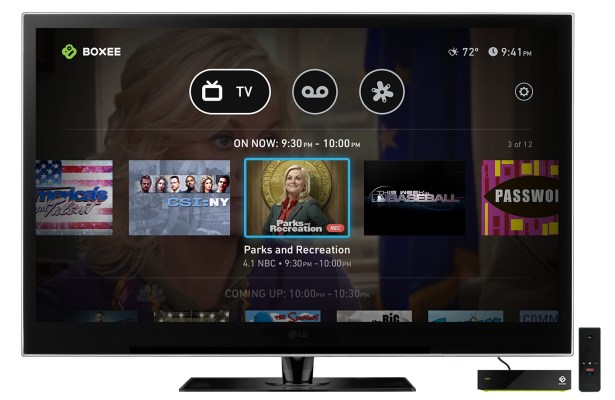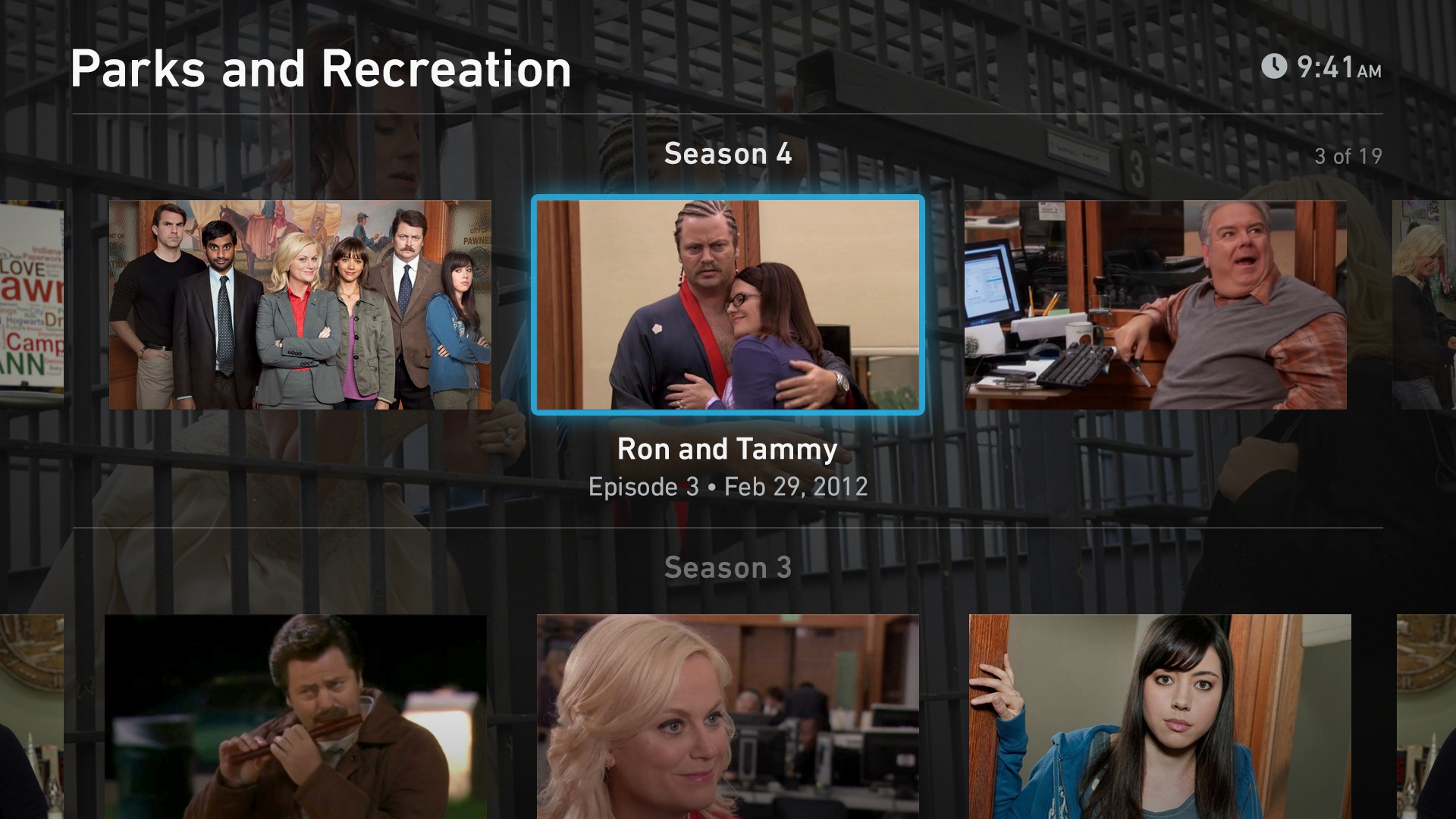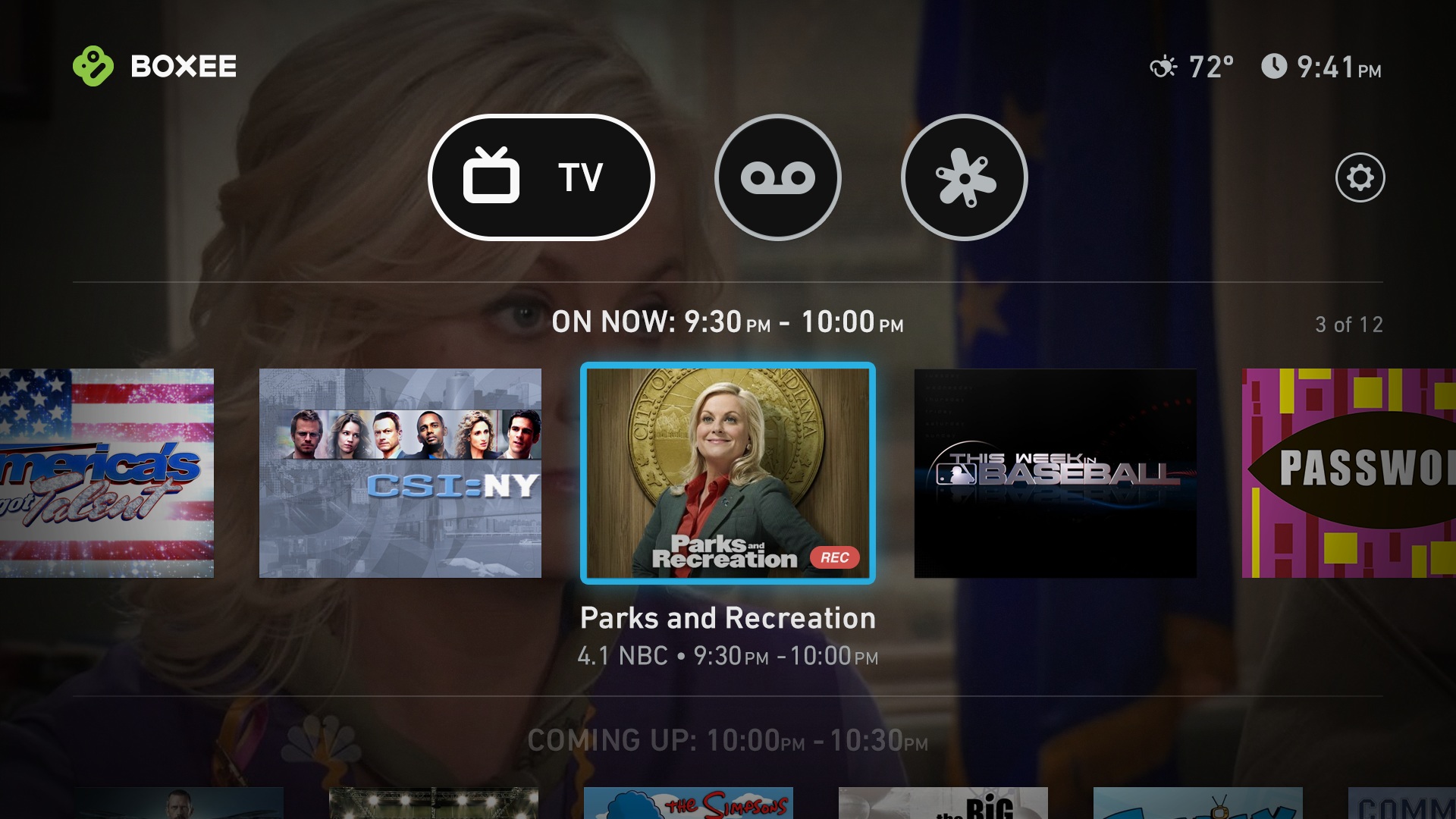Meet the Boxee TV: A $99 TV tuner/DVR aimed squarely at cord cutters and casual cable TV subscribers. It packs a DVR with unlimited storage, dual ATSC/QAM tuners, and several key apps including Netflix, Vudu, Pandora and YouTube. But most important, it’s built with Boxee’s DNA, which guarantees a class-leading user experience.
The Boxee TV is the company’s third major product release. The Boxee HTPC software hit 2008, which was followed by the Boxee Box made in partnership with D-Link in 2010. Boxee has since moved on from both products, putting development on both in a sort of holding pattern where the company will address issues but will no longer provide product updates. It’s all about the Boxee TV now, although the company doesn’t see the Boxee TV as a replacement for the two year old Boxee Box.
The Boxee TV attempts to address a large void in the TV segment: DVRs for cord cutters and casual cable subscribers. The D-Link-made set-top box can pull in over-the-air HDTV signals and unencrypted cable signals. The dual tuner setup also allows it to record two channels at once. Built off the lessons learned with the Boxee Box’s Live TV dongle, the Boxee TV includes every feature found in a traditional DVR. Best of all, like TiVo, it’s not tied to the cable provider and even works with over-the-air signals. But, also like TiVo, there is a monthly charge to use the cloud DVR of $14.99 a month. Yeah, that’s a lot.
The Boxee TV offers a novel approach to the DVR. Referred to by Boxee as the No Limits DVR, the Boxee TV is the first DVR that offers truly unlimited storage that also allows for remote viewing — for $15 a month. With the Boxee TV, owners can watch anything stored on their DVR from a mobile or desktop device. This is a stark departure from the traditional DVR that utilizes local storage to hold recordings.
The Boxee TV hits a major retailer in November, but the company is systematically rolling out access to the No Limits DVR to better manage scaling and customer support. The cloud DVR will only be available in the following markets at launch: NYC, LA, Dallas, Atlanta, Houston, Washington DC and Philadelphia. Boxee’s Avner Ronen tells me this accounts for 30% of the consumers in the US and that the company will open access to additional markets based on demand starting in 2013.
However, the cloud DVR is just part of the magic of the Boxee TV. The box utilizes Boxee’s fantastic user interface for the live TV programming guide and also includes a host of apps.
Boxee TV is not a Boxee Box replacement. To the company, they are different products aimed at different demographics. Avner tells me “The Boxee Box was built by geeks, for geeks” and then awkwardly follows it up with “The Boxee TV is made by geeks, for…people.”
For instance, the Boxee TV does not support as many file types or containers for local video streaming as the Boxee Box. The new unit also doesn’t have as many apps as the older model (including a web browser) although the Boxee TV does pack the major ones likes Netflix, Pandora and YouTube. The Boxee TV’s remote also lacks the QWERTY keypad found Boxee Box’s remote, though it does have dedicated buttons for Netflix and Vudu. On the flip side, the Boxee TV includes an ATSC/QAM tuner and access to the cloud DVR. Plus, it only costs $99 rather than the Boxee Box’s $199 MSRP.
We played with the Boxee TV a bit at the company’s NYC office this week. The UI is a tad sluggish but looks great. The EPG is fantastic. But the company wouldn’t let us play with several key features including the DVR, remote viewing or the apps. Look for our few review in the coming weeks.
Boxee recently stopped active development on the Boxee Box. It is now on a maintenance development cycle. Boxee will continue to support the Boxee Box and release bug patches, but the startup has shifted its limited resources to the Boxee TV. And this isn’t the first time the company has seemingly turned its back on older products.
Boxee has caught a fair amount of flack for its development cycle as users and owners have accused the company of abandonment. When the Boxee Box came out, Boxee quickly spun down development of its standalone HTPC software. And now with the Boxee TV, it has done the same thing with the Boxee Box, a product some users still report as buggy and incomplete. However, as a longtime Boxee Box owner myself, I put the Boxee Box in the same category as the iPad in terms of user satisfaction. It’s not perfect, but still a fantastic product and the best media streamer on the market. My family uses it daily.
It’s hard to argue against Boxee’s results though. Sure, the company has moved quickly from one product to another, but it’s on the verge of releasing its third product, and more telling to Boxee’s success, its second hardware product. Boxee also finagled a major retail partner for the Boxee TV, which will be announced in the days to come. Boxee’s lone downfall is that it tends to over-promise and then under-deliver. In 2011 following the Boxee Box’s release, the company promised a three month update cycle — it followed through, but only for several updates. Now the Boxee Box is effectively treading water, although, again, I’m fine with the product as-is.
So far the Boxee TV is shaping up to be every cable cutter’s dream device. Nearly every box on the wishlist is checked: it’s relatively inexpensive, packed with features not found on competitors, and uses a fantastic UI. The only downside is the crazy-high $15 monthly surcharge for the No Limits DVR, which is also only available at launch in certain markets. Still, Boxee is onto something big here. There are plenty of people ditching expensive pay TV for streaming services and this little $100 box offers a lot more functionality than a Roku or Apple for a lower price. Like the Boxee Box before it, the Boxee TV is set to disrupt a growing market.
Boxee is taking pre-orders on its website now and the unit will hit a major retailer in November.


